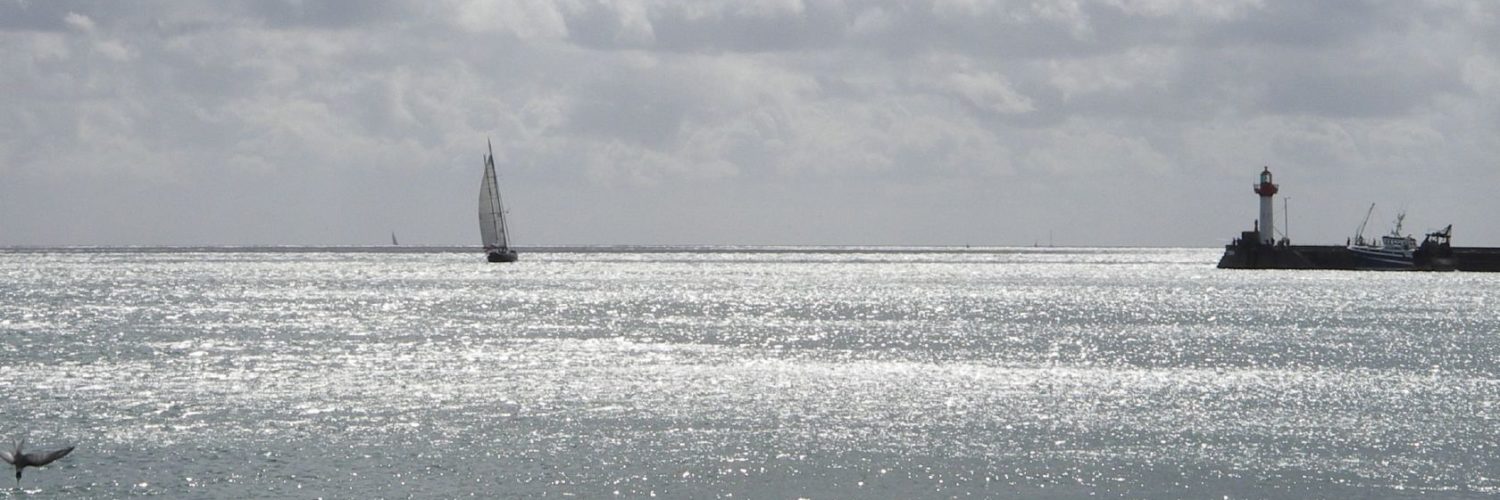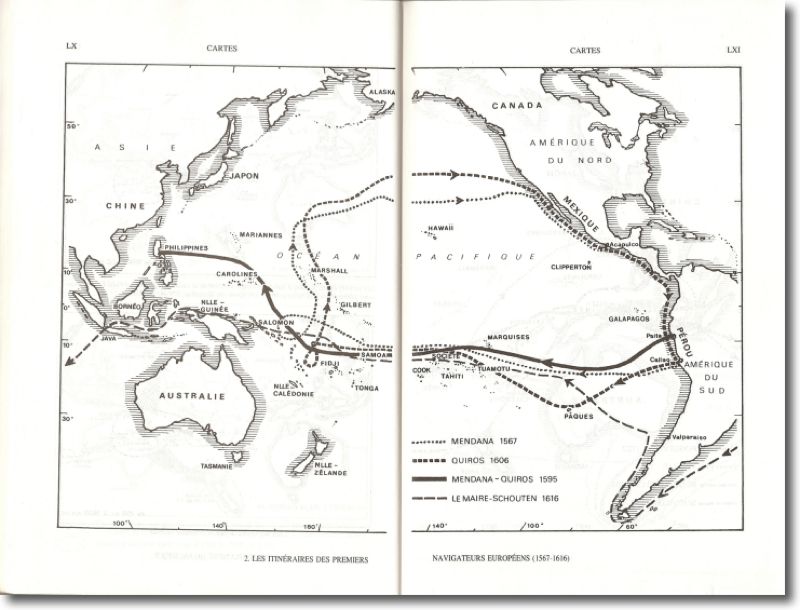 I had to embark in a few days for a convoying from Mediterranean to Polynesia. Unfortunately, The postponement of the departure to the end of the month and the professional constraints of returning imperatively at the beginning of May have just forced me to give up this trip. Bitter disappointment…
I had to embark in a few days for a convoying from Mediterranean to Polynesia. Unfortunately, The postponement of the departure to the end of the month and the professional constraints of returning imperatively at the beginning of May have just forced me to give up this trip. Bitter disappointment…
If you can't go there, It is always possible to experience it on paper. Following the "Voyage of Magellan" that I mentioned last December, I suggest a book that I discovered some ten years ago. A book to make you spend the winter by the fire, make you want to discover these islands scattered in the middle of the largest ocean on our planet, through their history told by the greatest travellers of past centuries.
The trip to Polynesia (*),
Subtitled "Anthology of Western Travellers from Cook to Segalen", is a paving stone of a few 1240 pages relating, through the stories and logbooks of sailors, The discovery of Polynesian peoples by Europeans. If the Spanish and Portuguese sailors of the sixteenth and seventeenth centuries were attracted by gold and spices, the European sailors of the eighteenth century travelled for science and the progress of civilization. Wallis, Bougainville, Cook Islands, Bligh, Forster and dozens of others have reported their encounters with Pacific Island civilization, describing in detail the customs, customs, religious or warlike practices of the peoples encountered from the Society Islands to the Marquesas, Tuamotu to Gambier. Later, in the nineteenth century, what are the writers who took over raiders, Melville, Stevenson, Segalen, Radiguet, London and also Gauguin, and other mariners, such as Dumont d'Urville and Ellis, whose travel accounts allow us to discover these monarchical micro-societies that reigned over the Pacific : their queens and kings, their behaviours, and the difficult contact of two civilizations at opposite ends of the world.
A book to be enjoyed in small doses during the winter, a fascinating read, sometimes tedious but so instructive, organized as a study thesis, accompanied in appendices by biographical notes of the travellers, a repertoire of Polynesian characters, a geographical directory and a glossary of Polynesian terms. Finally, a historical chronology makes it possible to situate the evolution of the Pacific islands in relation to that of the rest of the "Western" world. We find, at the beginning of the book, maps showing the location of major migration flows across the Pacific, and the maritime itineraries of the main discoverers from the fourteenth to the eighteenth centuries.
Jean-Jo Scemla
Disappeared in January 2007, the writer Jean-Jo Scemla lived in Oceania for eight years. Arrived in Tahiti in 1977, he worked as a journalist there and lived there for several years. He is the author of several publications on Oceanic literature.
Born in Rabat, in Morocco, student in Paris, practising journalism (The Dispatch from Tahiti, New Zealand Herald, the French channel of Radio-Australia, Le Matin de Paris, Le Monde), Jean-Jo Scemla was passionate about Polynesian culture and its contact with the Western world. He was also passionate about painters such as Gauguin and Octave Morillot and wrote an essay analyzing the Polynesian political situation in a remarkable collective work ("Tahiti after the bomb"). At the end of the year 2006, he signed a preface to the new edition of the "Souvenirs d'un vieux Normand", a travel account by William Leblanc published for the first time in 1895 and reissued at the end of 2006 by the Polynesian publisher Au Vent des Îles. He chaired the jury of the 6th Ouessant Island Book Prize in 2004.
—
(*) Editions Robert Laffont, 1994
—
Other titles in the Reading section
—


